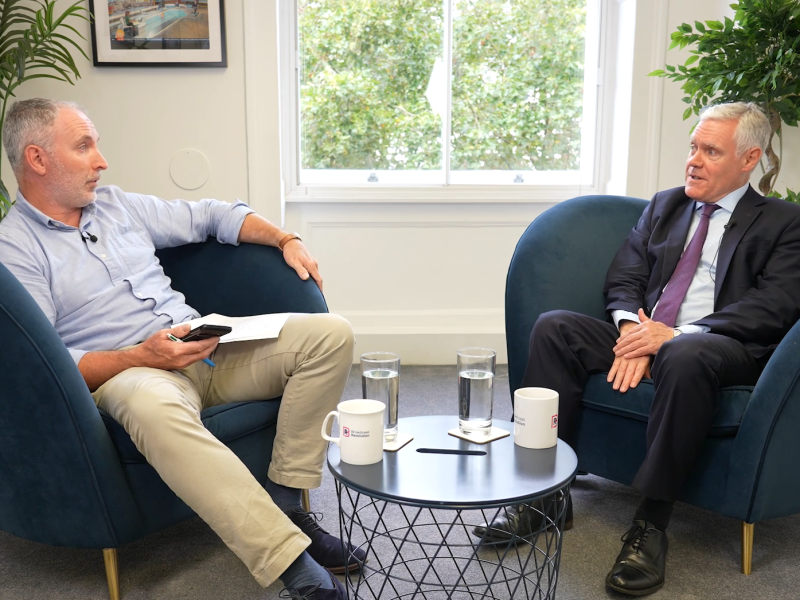
18/09/2025 / Broadcast Revolution HQ

In today’s fast-changing media landscape, balancing tradition with innovation is key.
That was the main takeaway when Mike Young, the Head of Broadcast Revolution’s Newsroom, sat down with Richard Jackson. Richard is a former Head of Journalism at the BBC and he was formerly the editor of BBC Radio 5live’s breakfast programme and the BBC World Service’s Newsday prog. Mike and Richard discussed how broadcasting is evolving and what the future holds.
For those with years of experience working in radio and TV, the shift towards digital platforms has been both exciting and challenging. Richard, who has worked in broadcasting across five decades, sees digital transformation as inevitable but filled with tough decisions. Local radio, for example, has faced major budget cuts, longer programmes and fewer staff—yet it’s not disappearing any time soon. Instead, local stations are adapting, finding ways to stay relevant by expanding their digital presence. Despite all the upheaval, they still have dedicated audiences tuning in, proving that local radio is still very much alive.
“Local radio is changing fast, but there’s still room for growth in the digital space.”
It’s not just about survival—it’s about evolution. Richard stressed that local voices and stories still matter, especially to regional audiences who feel overlooked in national conversations. While it’s easy to focus on the big headlines, the unique value of regional radio lies in delivering news that resonates with local communities. So, while national outlets may chase after the latest global trend, there’s still great potential in engaging regional communities and issues.
“Balancing the old and the new: The future of broadcast needs both.”
Then there’s the challenge of keeping traditional listeners engaged while attracting younger, digital-first audiences. The BBC, under Director General Tim Davie’s leadership, has been trying to strike this balance—continuing to serve its loyal, long-term audience while also finding ways to connect with the digital generation. Richard’s view? It’s about offering something valuable to both. Older listeners still appreciate live, in-depth broadcasts, but younger audiences want flexibility—podcasts, on-demand content, and the freedom to catch up on their own terms.
“Think globally: Make your stories resonate far and wide.”
Richard also drew on his time at the BBC World Service, where he learned that many stories need a global relevance to reach the wide audiences they serve. It’s not enough for a story to matter in the UK; it needs to resonate with listeners in Kenya, India, or the United States. For PR professionals hoping to get their stories picked up internationally, the key is to find that global hook.
“Digital is the future, but don’t count live broadcasts out just yet.”
As the industry continues its digital shift, there’s still a place for traditional live broadcasts. The question is how to integrate both into a media strategy. Mike and Richard both agreed that while digital platforms are essential, live broadcasts are far from dead. Whether it’s local radio, national television, or global news outlets, the most successful media strategies will be the ones that combine the best of all worlds.
For PR professionals and businesses looking to make an impact, the message is clear: know the audience you want to connect with, be adaptable, and don’t underestimate the power of a well-timed story—whether it’s on a live radio show, a podcast, or a global news platform.